Hi, friends! I am excited to share my strength training for runners program with you as it unfolds. Each week on #workoutWednesday I will share a new component of the program. We are starting with phase one which will last four weeks. I wrote an introduction to the program last week that explains how I am putting it all together. The intention is to slow-drip the content to my blog readers as it is created and then eventually offer it as an ebook once it's complete.
We already talked a little about goal setting, because it makes sense that before you start any new program you really think about what you want to get out of it. For best results think about your goals and what you what to accomplish over the duration of the program.
I am also including a nutrition component in the program because fueling your body properly for performance is important. You can check out this post about how to self-analyze your food journal as a starting point. More to come on sports and exercise nutrition.
WEEK ONE DAY ONE
Day one is an easy run and the strength training "A" workout.
EASY RUN
An easy run should be 30 minutes or less at a conversational pace. This means the effort level is leisurely and you can hold a conversation without gasping for breath between sentences. You can learn more about Rate of Perceived Exertion or RPE and how to determine your effort level in this post. The purpose of this workout is to build and maintain and running base.
STRENGTH TRAINING "A" WORKOUT
The strength training workout is about 20 minutes including rest periods. We are starting out with bodyweight exercises that can be progressed by adding weights as you get stronger.
This workout uses a 20 second work/10 second rest protocol repeated for 4 minutes. You can search "Tabata timer" in the app store or on Google play to find a free timer or I like to use the (afffiliate link-->) GymBoss timer.
For each round you will alternate between two exercises for the four minute duration.
Exercise one: 20 seconds
rest 10 seconds
Exercise two: 20 seconds
rest 10 seconds
repeat for four minutes
rest one minute between rounds
These particular exercises were selected to strengthen your core (which includes your hips). Runners often have muscle imbalances because as you run, your quads (front of your thigh) and your calves grow strong while your hips and hamstrings are under utilized. You run in only one plane of motion (forward). To improve strength, overall athleticism and avoid injuries, it is essential to build strength laterally.
Fit to run strength training for runners - download a printable version of this workout. Save to your favorite fitness Pinterest board
ROUND ONE: SQUAT AND SIDE LUNGE
SQUAT:
Push your hips back and lower until your thighs are parallel to the floor (like you are sitting back in a chair) or as low as your flexibility allows. In the low position, engage your core, squeeze your glutes and push back up to standing. Return to center, push hips back again and repeat for 20 seconds. Take a deep breath in as your lower to the squat and breathe out as you return to standing. Rest for 10 seconds before moving on to the next exercise.
SIDE LUNGE:
Face forward with toes pointing straight ahead, take a wide step out to your right side. Push your hips back, bend your right knee, while straightening your left leg. With your back straight, hinge at your hips to aim to touch the floor with both hands on either side of your foot. Do not round your back or allow your knee to move forward beyond your toe. Be sure to keep your torso and both feet facing forward. Alternate between the right and left side for 20 seconds. Rest for 10 seconds before moving on to the next exercise.
Rest for up to one minute between rounds.
ROUND TWO: LUNGE AND CURTSY SQUAT
LUNGE:
With your feet hip width apart and your toes pointed straight ahead, engage your core and keep your back straight. Take one large step with your right leg to lunge forward until your front knee is lined up over your ankle and your back knee is nearly touching the floor. Do not allow your knee to move forward over your toes. Resist the urge to lean forward or rest your arms on your thighs. Once you are in the lunge position push back up to starting position. Alternate legs for 20 seconds. Rest for 10 seconds before moving on to the next exercise
CURTSY LUNGE
Stand with your feet hip apart. Cross your right leg behind the body and to the left. Bend left knee 90 degrees, or as low your flexibility will allow, toes pointing forward, then return to starting position. Alternate sides for 20 seconds. Rest for 10 seconds before moving on to the next exercise.
Rest for up to one minute between rounds.
ROUND THREE: BRIDGE AND BICYCLE
BRIDGE:
Lie on your back with your knees bent and push your hips off the floor so your body is in a straight line from your shoulders to your ankles. Squeeze your glutes and engage your abs for 20 seconds. Rest for 10 seconds before moving on to the next exercise.
BICYCLE:
Lie flat on the floor with the lower back pressed into the ground. Place your hands on either side of your head, do not lock your fingers or pull on your head. Lift your head and shoulder off the floor and touch your right elbow to the left knee. At the same time, straighten your right leg, keeping it several inches off of the floor. Alternate sides to repeat the motion you'd make while pedaling a bicycle for 20 seconds. Rest for 10 seconds before moving on the next exercise.
Rest for up to one minute between rounds
ROUND FOUR: PUSHUP AND PLANK ROW
PUSH UP:
Start in a high plank position with your hands placed a little wider than your shoulders. Keep your body in a straight line, while engaging your core, bend your elbows slowly to lower your chest to the floor. Once in the low position, push back up to the starting position. If this is too challenging, drop to your knees or do incline pushups to reduce the weight. Repeat for 20 seconds. Rest for 10 seconds before moving on to the next exercise.
PLANK ROW:
Start in a straight-arm high plank position with your wrists directly under your shoulders and your legs slightly wider than hip width for stability. Keep your body in a straight line from your shoulders to ankles while engaging your core. Do not allow your hips to hike up or sag down.
With your core tight and your glutes engaged lift your right elbow to row as you bend your elbow up toward the ceiling. Keep your elbows close to your side, do not allow them to flare out. You can do this exercise with or without weights. Alternate sides for 20 seconds. Rest for 10 seconds before moving on to the next exercise.
When you're finished, if you're a weirdo like me, you'll sing for joy. Or maybe not.
Like this post? It helps me when you share with your friends or followers.

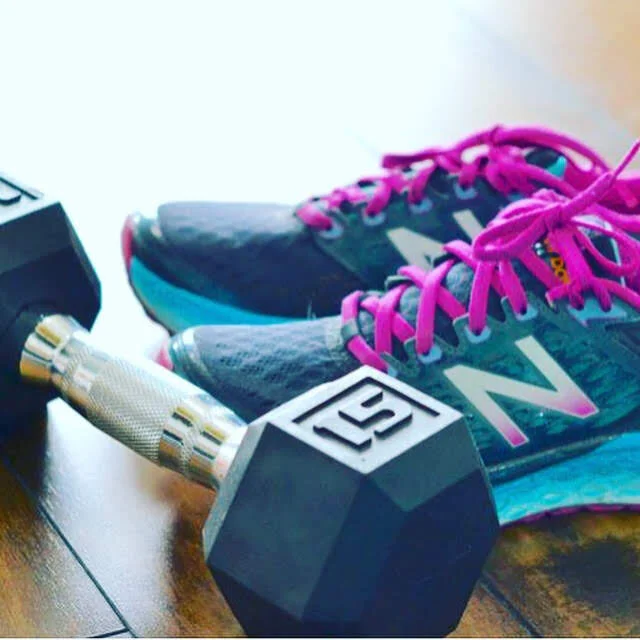


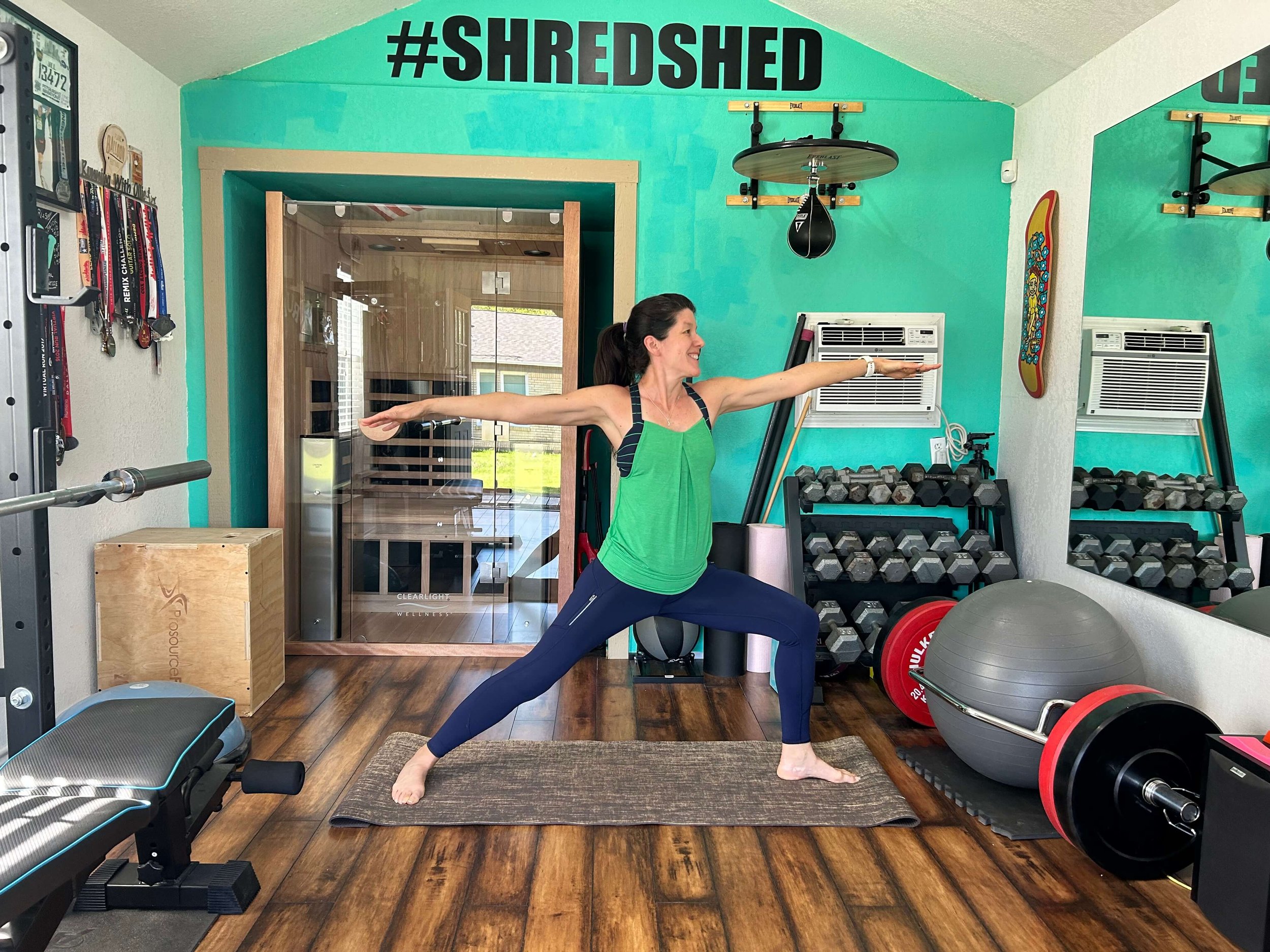

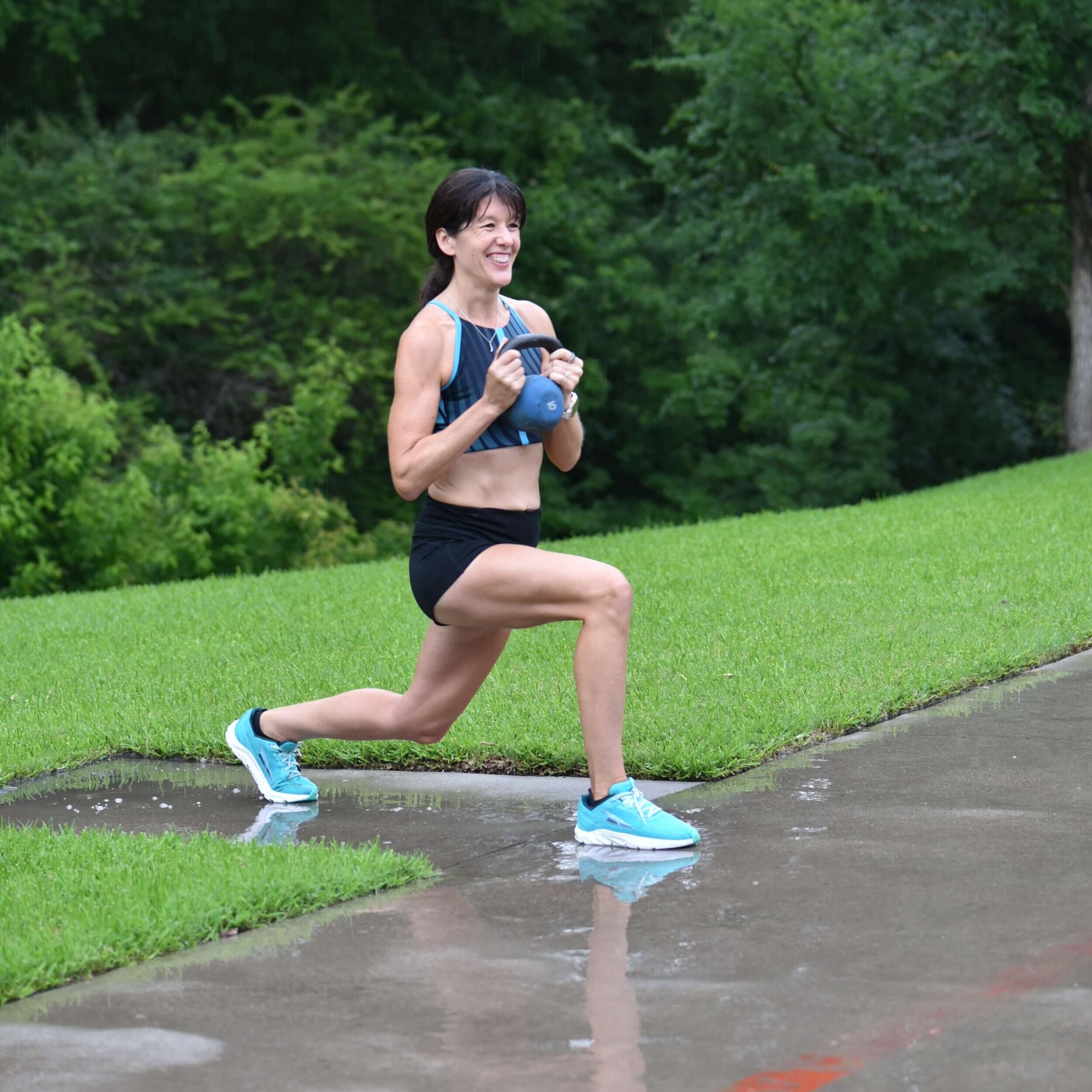

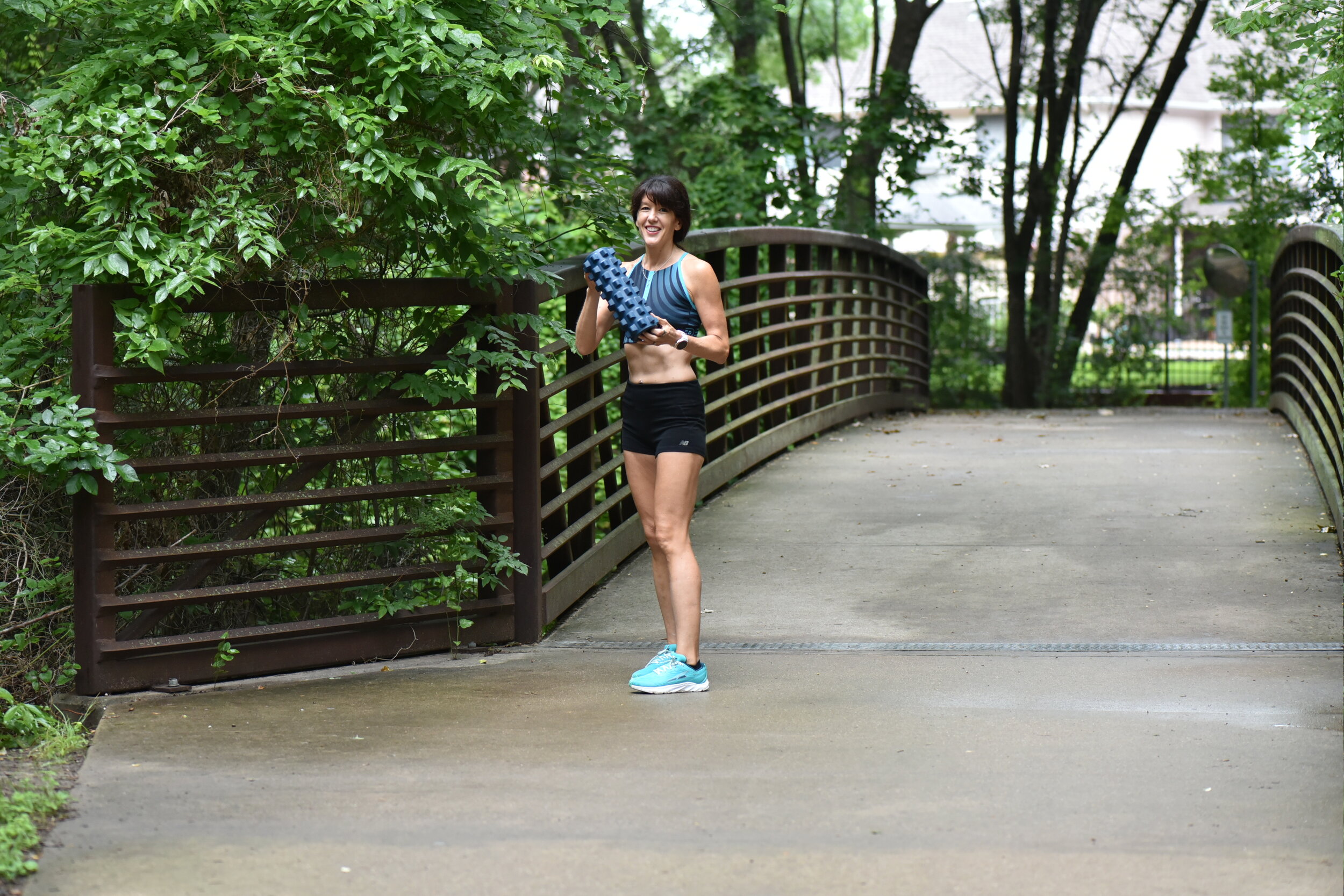
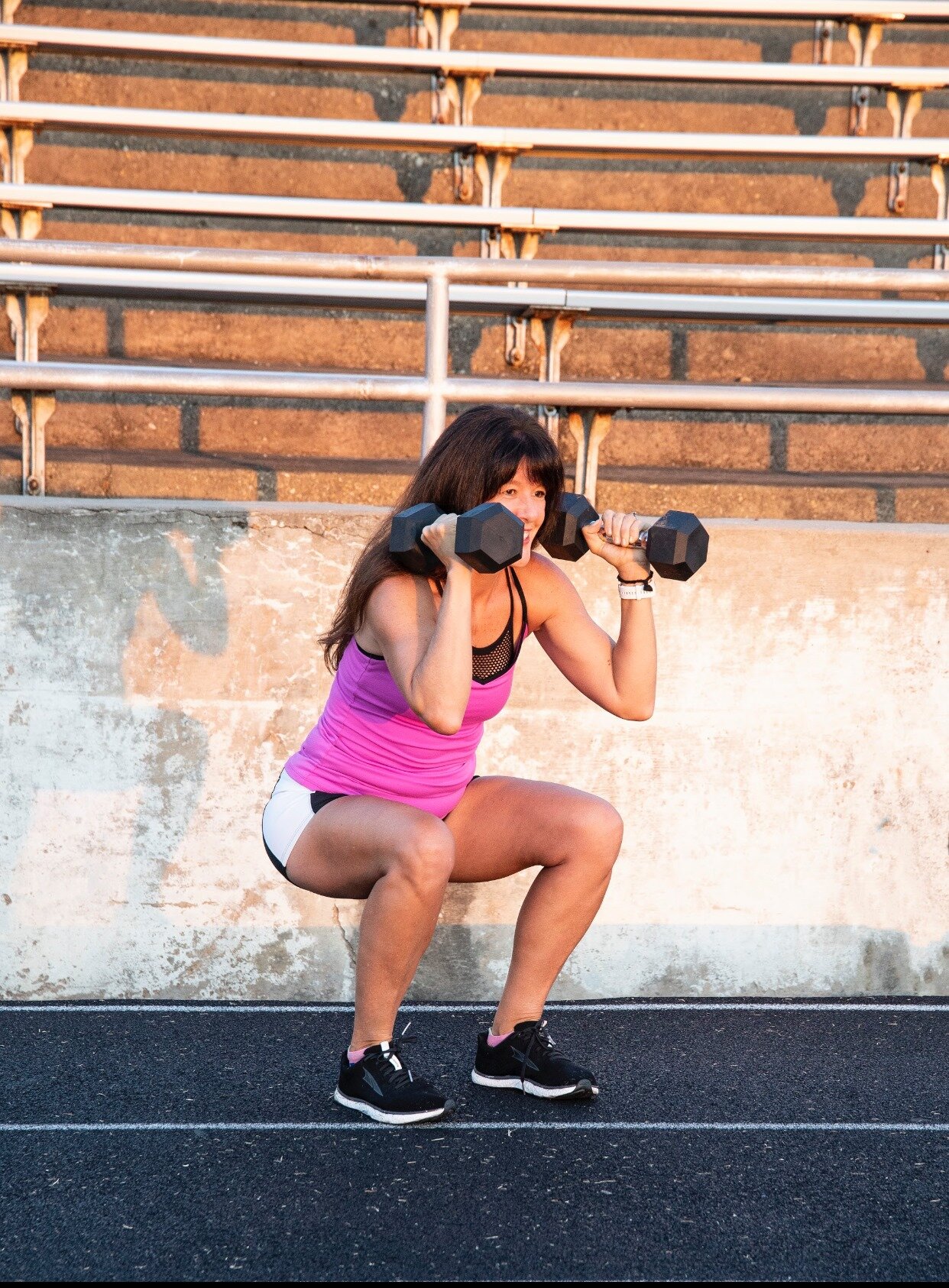






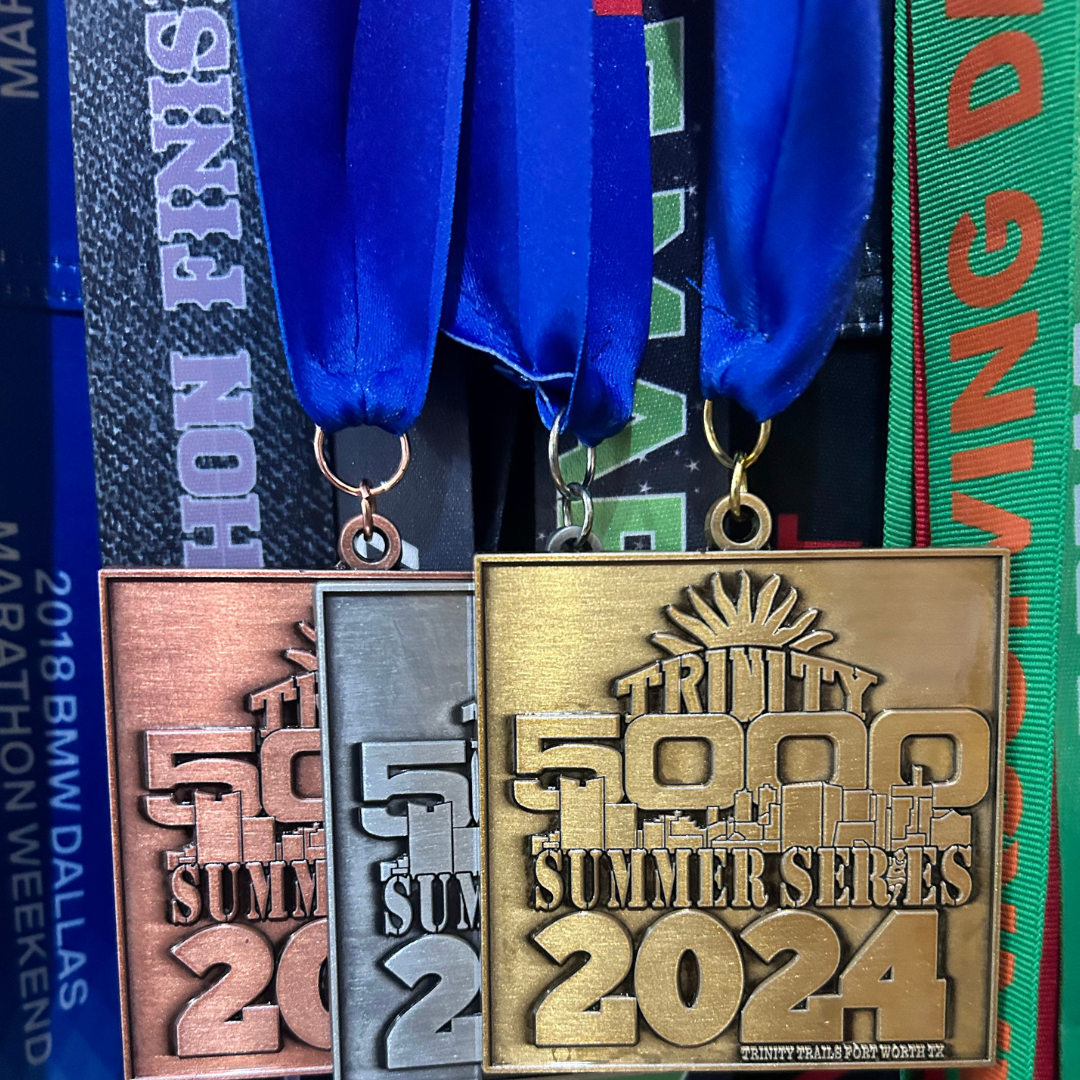







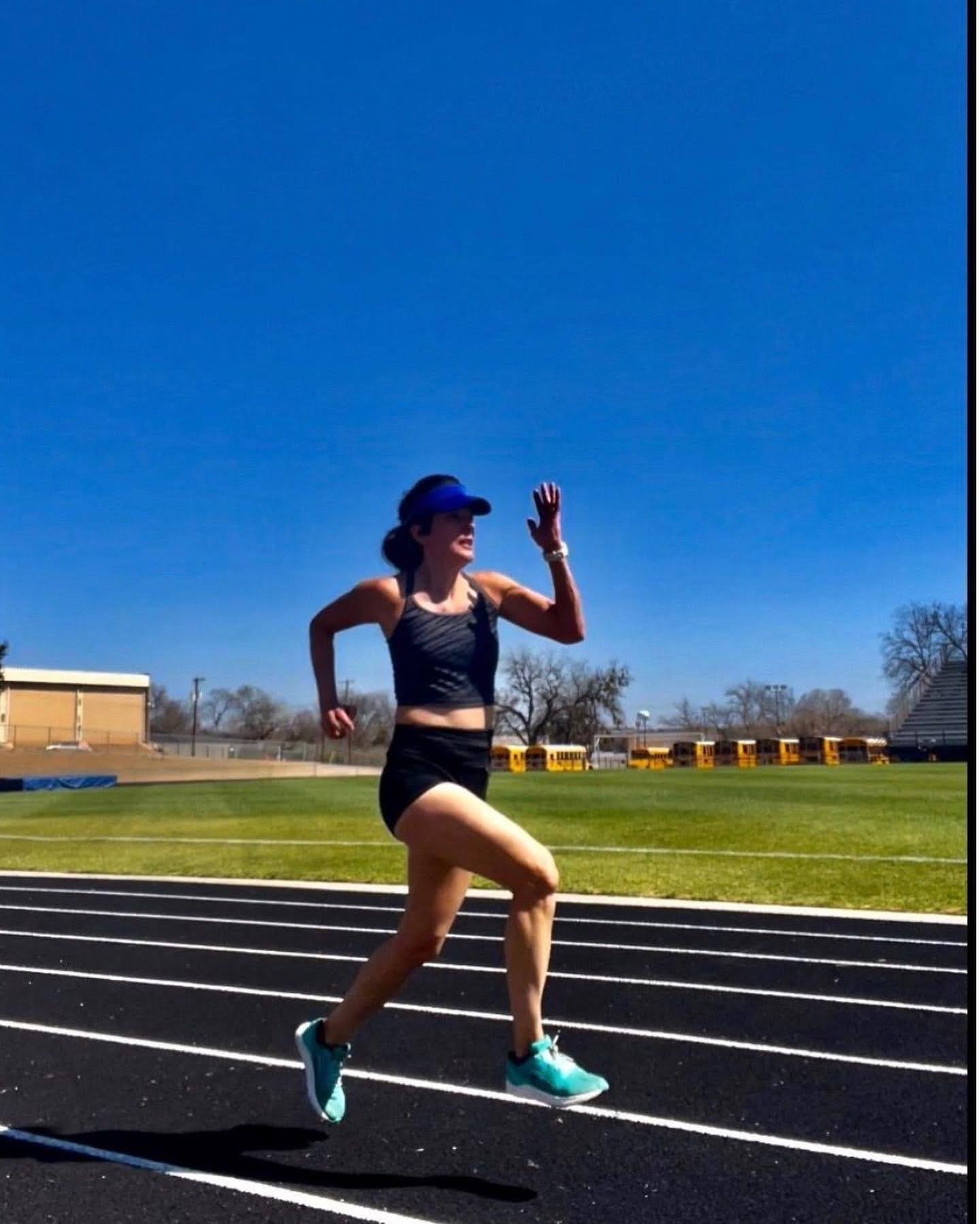












I love cardio, running specifically. But after 30, it’s not enough to keep muscle, boost metabolism, or stay strong. Lifting doesn’t replace your favorite workouts, it helps you run, ride, and move better, so you can keep doing what you love for years to come. download my free three week strength training program to get started.